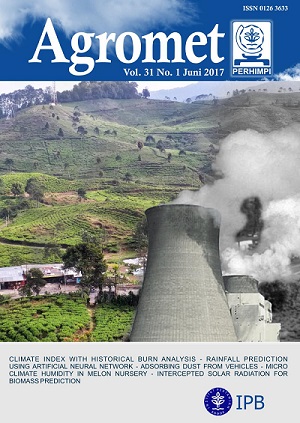Dynamics of Intercepted Solar Radiation to Simulate Dry Matter of Soybean (Glycine Max (L.) Merrill)
Abstract
Solar radiation greatly affects the development of plant biomass. The process of plant development is complex. Here, we simplified this complexity through modeling experiment by integrating climate variables. This study aims to determine the dynamics of canopy intercepted solar radiation under soybean (Glycine Max (L.) Merrill). We employed the shierary-rice model to calculate plant biomass. The results showed that intercepted radiation continuosly increased during vegetative phase, whereas the radiation remains constant during generative phase. Our observation confirmed that the pattern of intercepted radiation followed the angular pattern of sunlight. The intercepted radiation was optimum at 10:00 to 14:00 pm, and it was used to form the plant dry matter. We found that the intercepted radiation contributed until 12%. Based on this contribution, we built our crop model of soybean biomass. Our model performed well in simulating dry biomass with high R2 (0.9), and as indicated by the plot 1:1 between dry matter of model and field observations. Further, the result of t test between model and observed data confirm this strong corelation (p-value 0.07).

